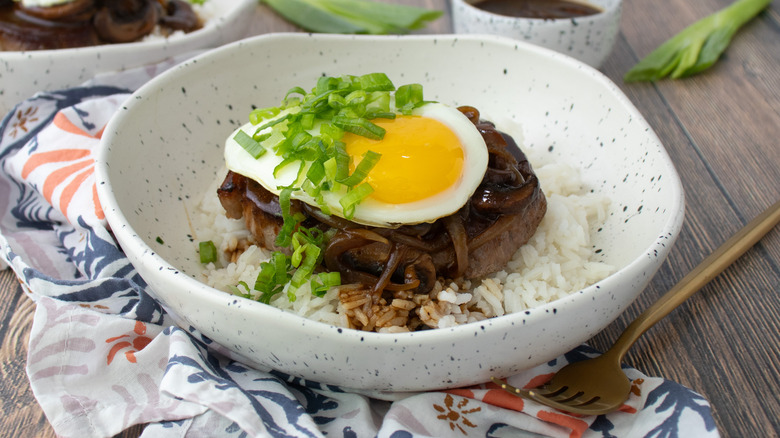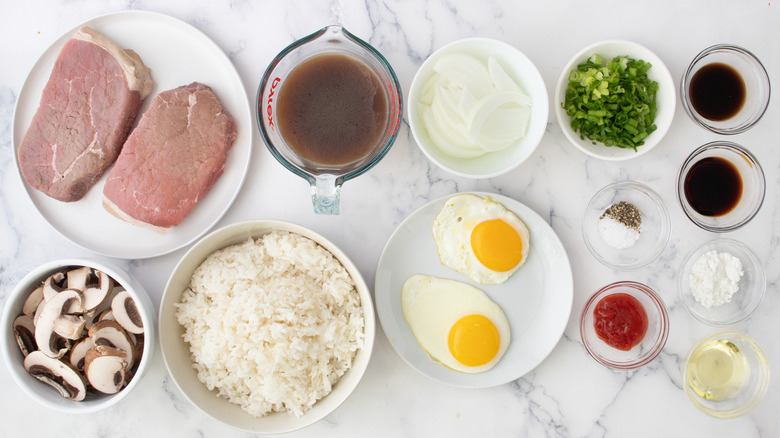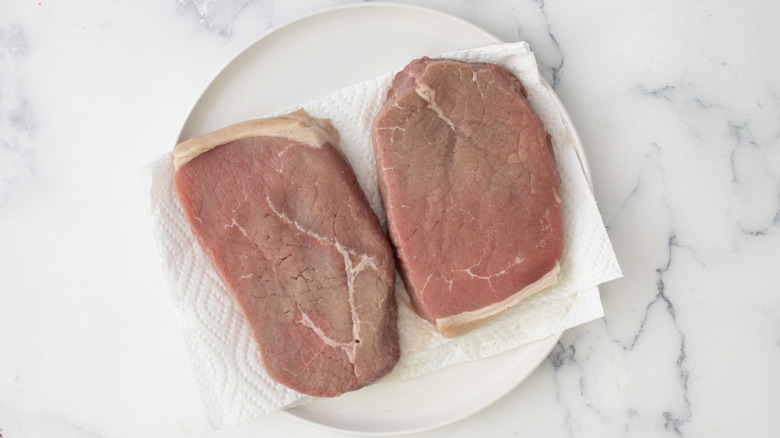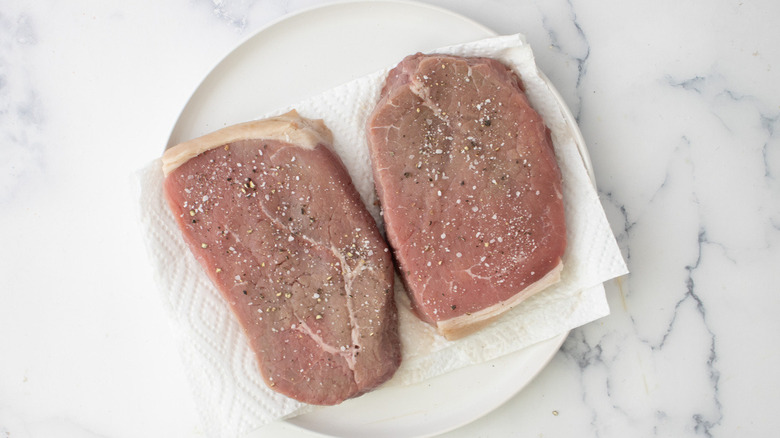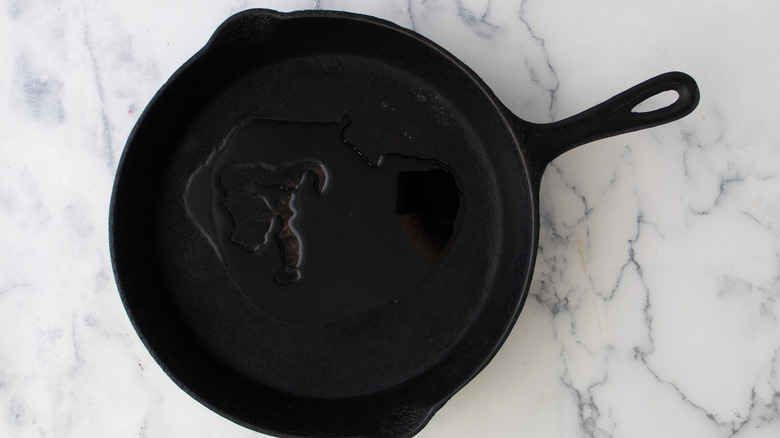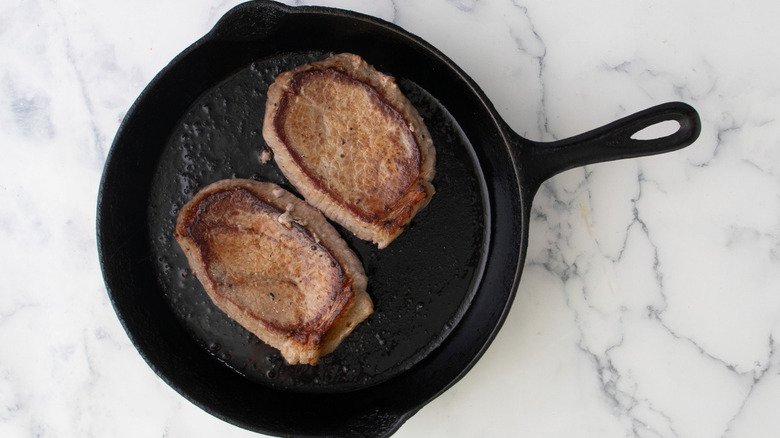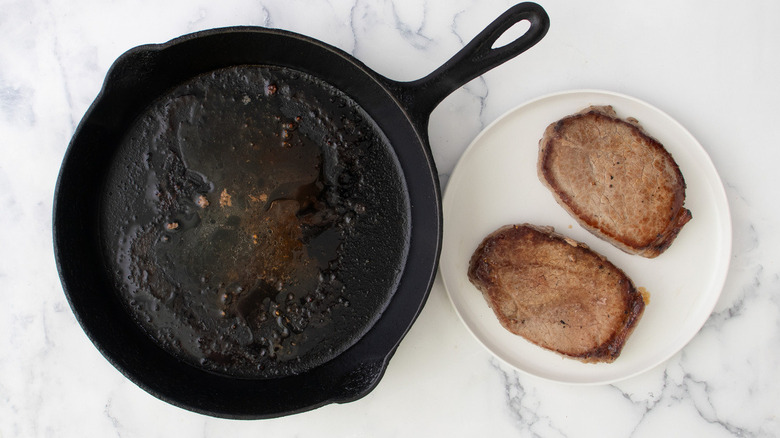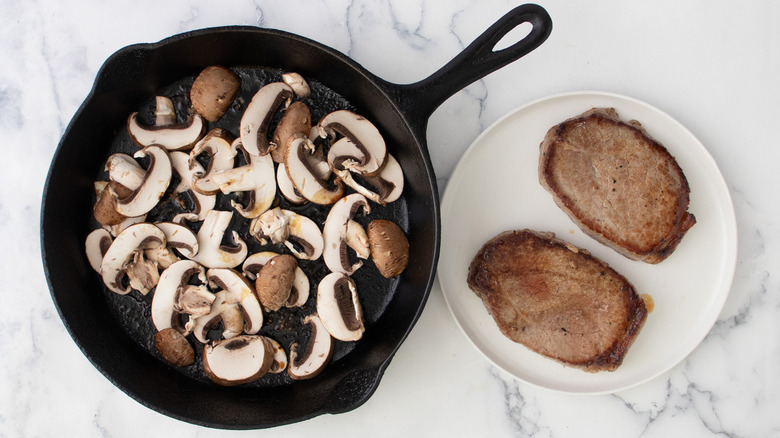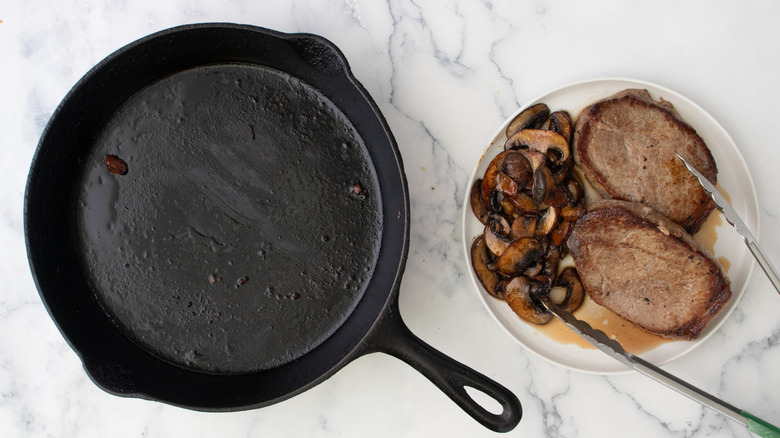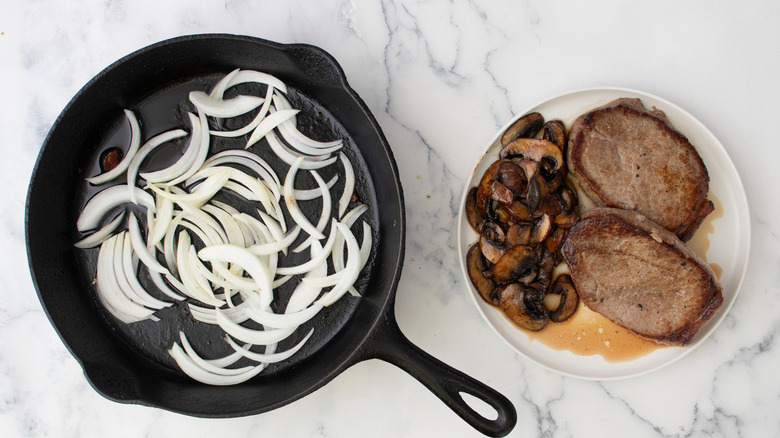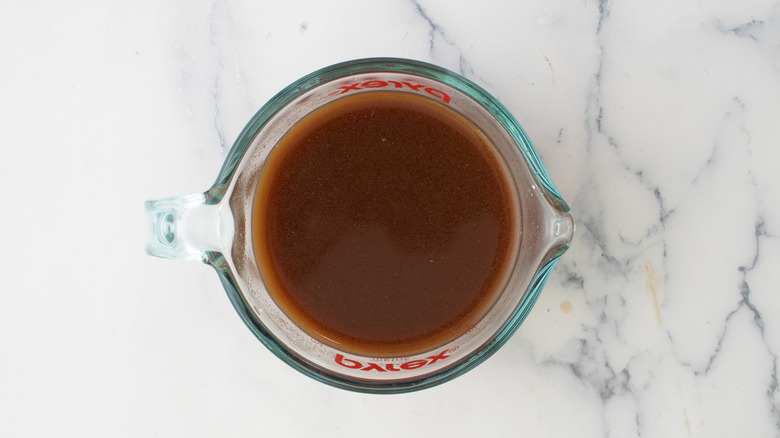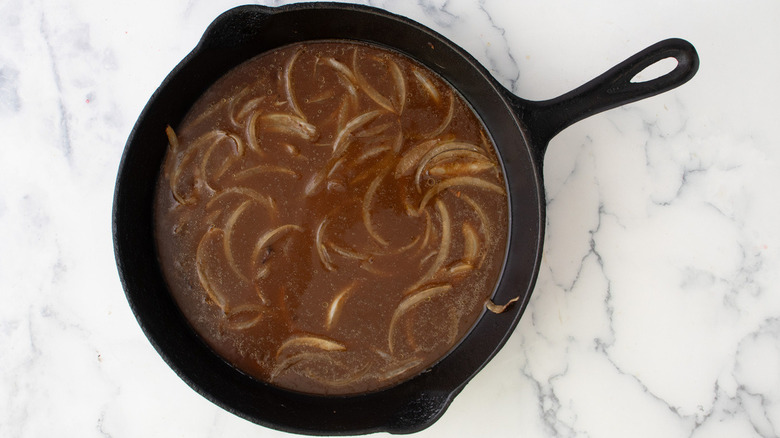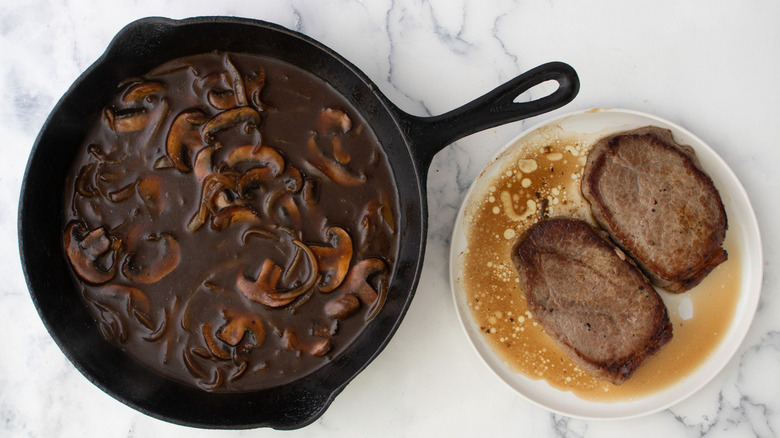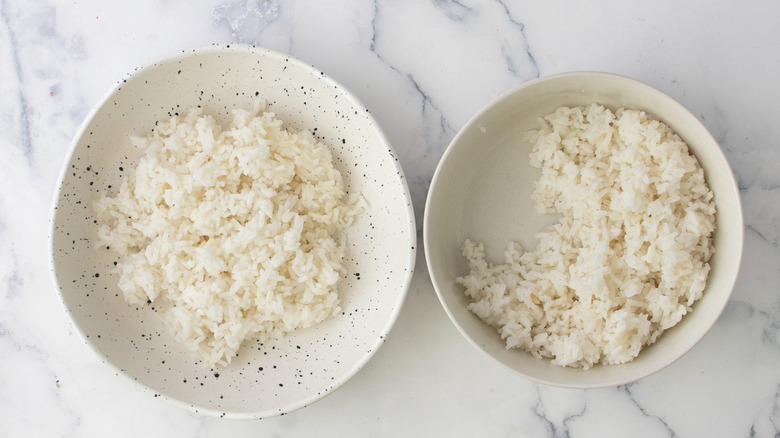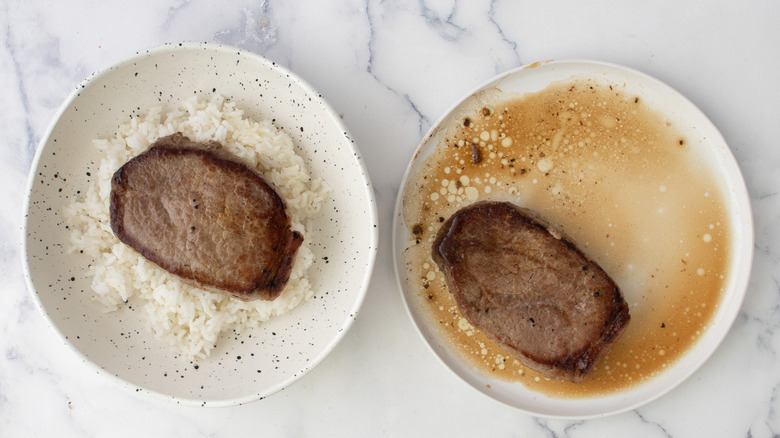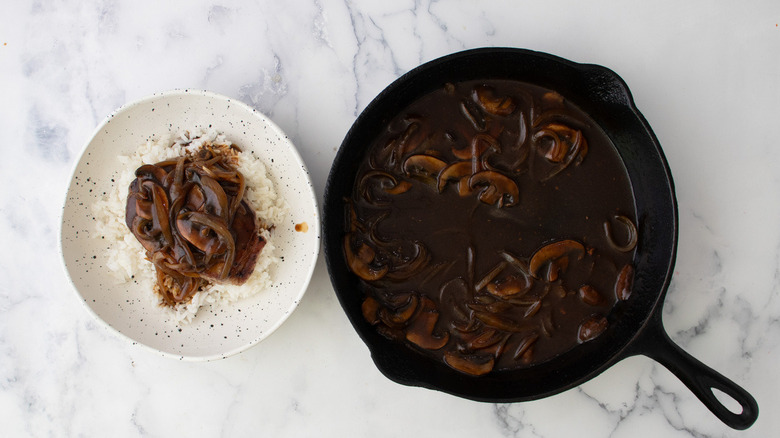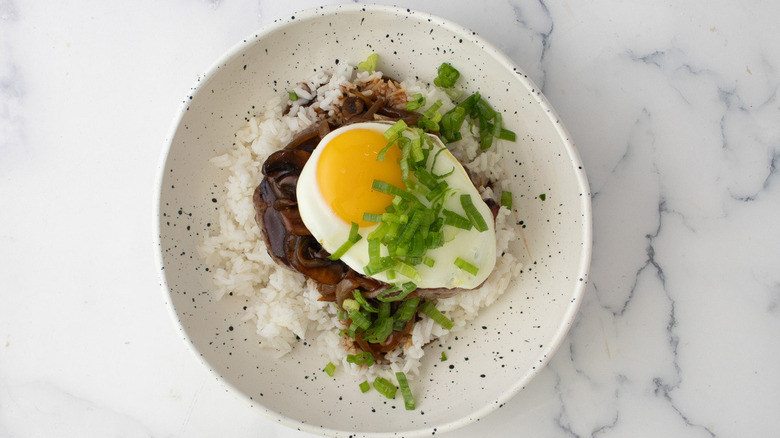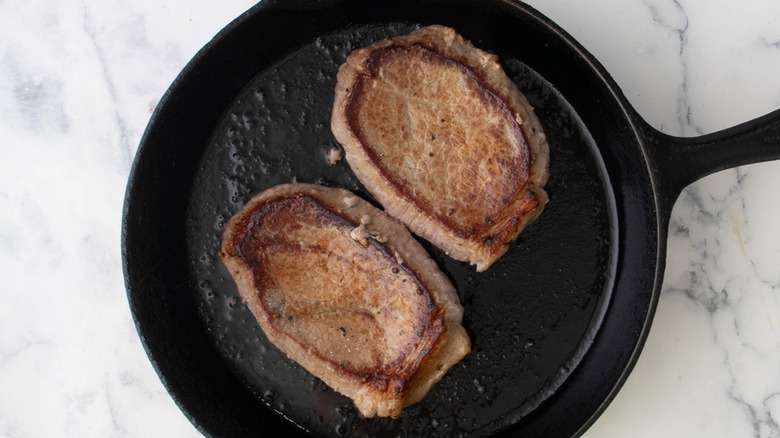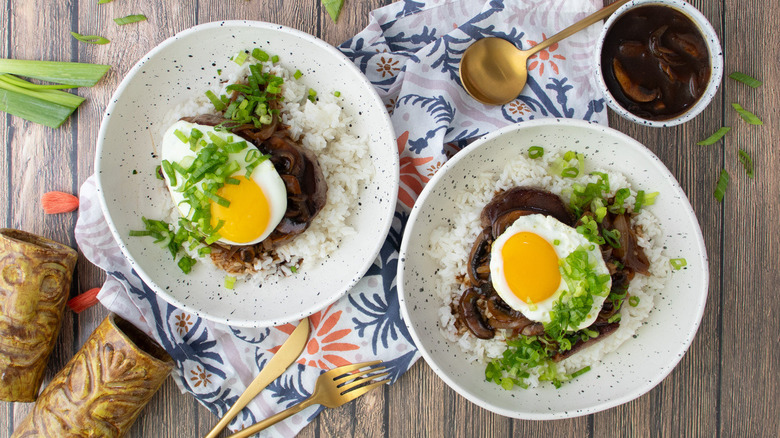Loco Moco-Style Round Steak Recipe
Anyone who has ever enjoyed Salisbury steak might find a comparable likeness in loco moco. In fact, if you're anything like recipe developer Patterson Watkins, you just might like the classic Hawaiian fare even better. "Loco moco is what I always wished Salisbury steak would taste like, be like, and look like," Watkins says. She certainly doesn't hate Salisbury steak, but loco moco simply "takes it all to a new level." Watkins takes things to a whole new level once again with this loco moco-inspired round steak recipe. Instead of the hamburger patty found on classic loco moco, round steaks shine alongside other recipe staples, including rice, mushroom and onion gravy, a runny egg, and green onions to top it all off.
There's a distinct savoriness to loco moco that is pretty hard to beat, so even though it's not the most high-end meal out there, it definitely packs in a heartiness that other dishes just can't compete with. In this recipe, Watkins highlights the umami-forward flavor of the gravy: "The addition of a fried egg, with all that runny yolkiness, infuses with the brown gravy with this luscious, silky richness." Pair all of that goodness with a perfectly cooked round steak, and you've got your very own loco moco-inspired lunch or dinner — no trip to Hawaii necessary.
Gather the ingredients for loco moco-style round steaks
As expected, you'll need a couple of round steaks to serve as the meaty base of this loco moco-style recipe, along with some salt and pepper, for seasoning. To stay true to classic loco moco, you'll also need white rice, fried eggs, and chopped scallions for serving. And, we can't forget about the savory gravy, which consists of cremini mushrooms, sliced yellow onion, beef broth, Worcestershire sauce, soy sauce, ketchup, and cornstarch.
Step 1: Dry the steaks
Pat the steaks dry with paper towels.
Step 2: Season the steaks
Season the steaks with the salt and pepper.
Step 3: Heat up a skillet
Heat 1 tablespoon oil in a large skillet over medium-high heat.
Step 4: Sear the steaks
Once hot, add the steaks and sear for 3 minutes per side, or until deeply browned.
Step 5: Set the steaks aside
Remove the seared steaks from the skillet and set aside to rest on a clean plate.
Step 6: Add the mushrooms to the skillet
Add another 1 tablespoon oil to the skillet and, once hot, add the mushrooms.
Step 7: Saute the mushrooms
Saute the mushrooms for 5–8 minutes, or until tender and brown. Remove the mushrooms from the skillet and set aside on the plate with the steaks.
Step 8: Cook the onions
Add the remaining 1 tablespoon oil to the skillet. Once hot, add the onions and cook until tender and brown, about 10 minutes.
Step 9: Whisk the gravy together
Meanwhile, place the beef broth, Worcestershire sauce, soy sauce, ketchup, and cornstarch in a medium bowl or large measuring cup. Whisk to combine.
Step 10: Add the sauce to the onions
Once the onions are tender, add the sauce mixture and whisk to combine. Bring to a simmer and continue to cook, stirring frequently, until the sauce has thickened, about 5 minutes.
Step 11: Stir in the mushrooms
Remove the skillet from the heat and add the cooked mushrooms, stirring to combine with the sauce and onions.
Step 12: Begin building the bowls
To serve, divide the cooked rice between bowls or plates.
Step 13: Add steak
Top the rice with the seared steaks.
Step 14: Spoon over the gravy
Spoon the sauce over the steaks, making sure to divvy up those tasty onions and mushrooms.
Step 15: Add the finishing touches
Top the steaks with the fried eggs and chopped scallions before serving.
Loco Moco-Style Round Steak Recipe
With a bed of rice, seared steaks, a mushroom gravy, and a fried egg, Hawaiian loco moco is a hearty recipe that's suitable for any meal of the day.
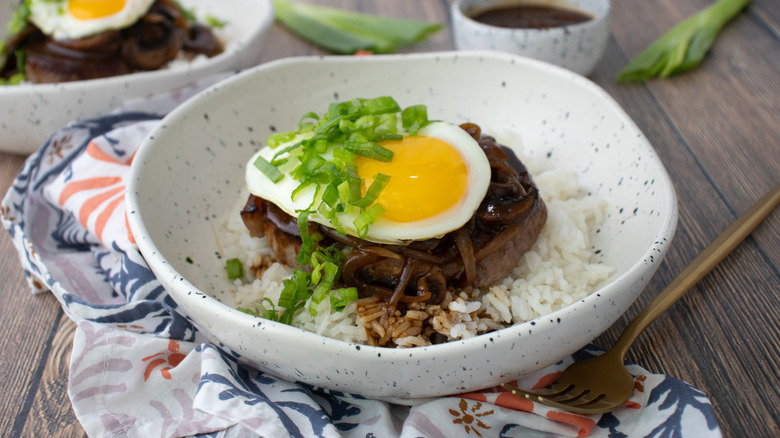
Ingredients
- 2 (roughly 6-ounce) round steaks
- ¼ teaspoon salt
- 1 pinch black pepper
- 3 tablespoons olive oil, divided
- ½ pint cremini mushrooms, sliced
- ½ cup sliced yellow onions
- 1 cup beef broth
- 1 tablespoon Worcestershire sauce
- 1 tablespoon soy sauce
- 1 tablespoon ketchup
- ½ tablespoon cornstarch
- 2 cups cooked white rice
- 2 fried eggs
- ⅓ cup chopped fresh scallions
Directions
- Pat the steaks dry with paper towels.
- Season the steaks with the salt and pepper.
- Heat 1 tablespoon oil in a large skillet over medium-high heat.
- Once hot, add the steaks and sear for 3 minutes per side, or until deeply browned.
- Remove the seared steaks from the skillet and set aside to rest on a clean plate.
- Add another 1 tablespoon oil to the skillet and, once hot, add the mushrooms.
- Saute the mushrooms for 5–8 minutes, or until tender and brown. Remove the mushrooms from the skillet and set aside on the plate with the steaks.
- Add the remaining 1 tablespoon oil to the skillet. Once hot, add the onions and cook until tender and brown, about 10 minutes.
- Meanwhile, place the beef broth, Worcestershire sauce, soy sauce, ketchup, and cornstarch in a medium bowl or large measuring cup. Whisk to combine.
- Once the onions are tender, add the sauce mixture and whisk to combine. Bring to a simmer and continue to cook, stirring frequently, until the sauce has thickened, about 5 minutes.
- Remove the skillet from the heat and add the cooked mushrooms, stirring to combine with the sauce and onions.
- To serve, divide the cooked rice between bowls or plates.
- Top the rice with the seared steaks.
- Spoon the sauce over the steaks, making sure to divvy up those tasty onions and mushrooms.
- Top the steaks with the fried eggs and chopped scallions before serving.
Nutrition
| Calories per Serving | 846 |
| Total Fat | 40.3 g |
| Saturated Fat | 10.0 g |
| Trans Fat | 0.0 g |
| Cholesterol | 264.9 mg |
| Total Carbohydrates | 66.6 g |
| Dietary Fiber | 1.8 g |
| Total Sugars | 5.7 g |
| Sodium | 1,335.0 mg |
| Protein | 51.3 g |
What are some tips for cooking perfect, tender round steaks?
Steak isn't necessarily the most difficult food to cook, nor is it the easiest. With so many cuts available and each requiring slightly different cooking techniques, it's easy to make mistakes when cooking steak if you're not careful. Watkins explains that round steaks come from a particularly overworked part of a cow's body, which means that there's not a whole lot of fat and much more leanness. There's a bigger risk of ending up with a rough, tough, overcooked piece of meat.
Luckily, Watkins has some tips for ensuring perfectly tender round steaks. The first method is to salt the steaks and let them sit in the fridge for 1 to 2 hours before cooking (be sure to dust off excess salt before cooking). This helps "break down some of those firm protein bonds," Watkins says. If you go the salt route, you may want to adjust the salt you use later on in the recipe, like using a low-sodium soy sauce.
Another method involves marinating the steaks. "A simple combination of olive oil, soy sauce, lemon juice, garlic, salt, and pepper will do the trick," Watkins says. Refrigerate the steak in the marinade for 1 to 2 hours before cooking. Finally, if all else fails, bust out the handy meat mallet and use the spiked side to pound out the steaks before cooking.
What is the history of loco moco?
We've already touched on the fact that loco moco has Hawaiian roots, but there's a little bit more to the story than just that. Though there's some contention about the exact origin of loco moco, Watkins highlights the story of a couple teenage boys in 1940s Hawaii who were in the market for a hearty meal that wasn't a sandwich and was relatively quick to make. The teens were actually looking to make something in the breakfast realm, hence the fried eggs on top, though the hearty, savory nature of loco moco makes it pretty well-suited for any meal of the day.
Now, what about the name loco moco? One of the teens who first tried the dish was nicknamed Loco, and as for the moco part, well ... it rhymes! And just like that, loco moco was born in Hawaii. tThough plenty of people have tried and tweaked it in the decades since, the tried-and-true formula of white rice, hamburger patty, brown gravy, and sunny side up egg remain paramount to the classic iteration.
